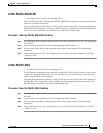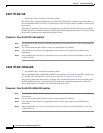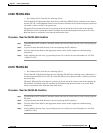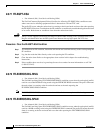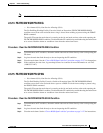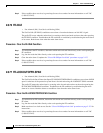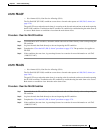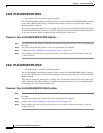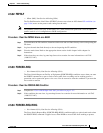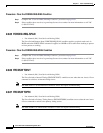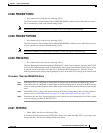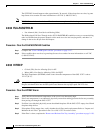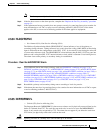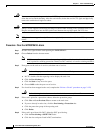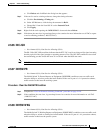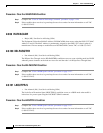
2-69
Cisco ONS 15327 Troubleshooting Guide, R3.4
March 2004
Chapter 2 Alarm Troubleshooting
Alarm Procedures
2.6.82 FEPRLF
• Minor (MN), Non-Service Affecting (NSA)
The Far End Protection Line Failure (FEPRLF) alarm occurs when an APS channel SF condition (see
page 2-106) occurs on the protect card coming into the node.
Note The FEPRLF alarm occurs only on the ONS 15327 when bidirectional protection is used on optical
(traffic) cards in a 1+1 configuration or BLSR configuration.
Procedure: Clear the FEPRLF Alarm on a BLSR
Step 1 To troubleshoot the FE condition, determine which node and card links directly to the card reporting the
FE alarm.
Step 2 Log into the node that links directly to the card reporting the FE condition.
Step 3 Clear the main alarm. Refer to the appropriate alarm section in this chapter in this chapter for
instructions.
Step 4 If the alarm does not clear, log onto http://www.cisco.com/tac for more information or call TAC
(1-800-553-2447).
2.6.83 FORCED-REQ
• Not Alarmed (NA), Non-Service Affecting (NSA)
The Force Switch Request on Facility or Equipment (FORCED-REQ) condition occurs when you enter
the FORCE command on a span or card to force traffic from a working card or working span to a
protection card or protection span or vice versa. You do not need to clear the condition if you want the
force switch to remain.
Procedure: Clear the FORCED-REQ Condition
Step 1 Complete the “Clear a BLSR Span Lock Out” procedure on page 2-127.
Step 2 If the condition does not clear, log onto http://www.cisco.com/tac for more information or call TAC
(1-800-553-2447).
2.6.84 FORCED-REQ-RING
• Not Alarmed (NA), Non-Service Affecting (NSA)
The Force Switch Request Ring (FORCED-REQ-RING) condition applies to optical trunk cards when
the FORCE RING command is applied to two-fiber BLSRs to move traffic from working to protect.



